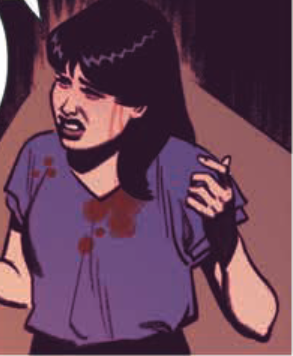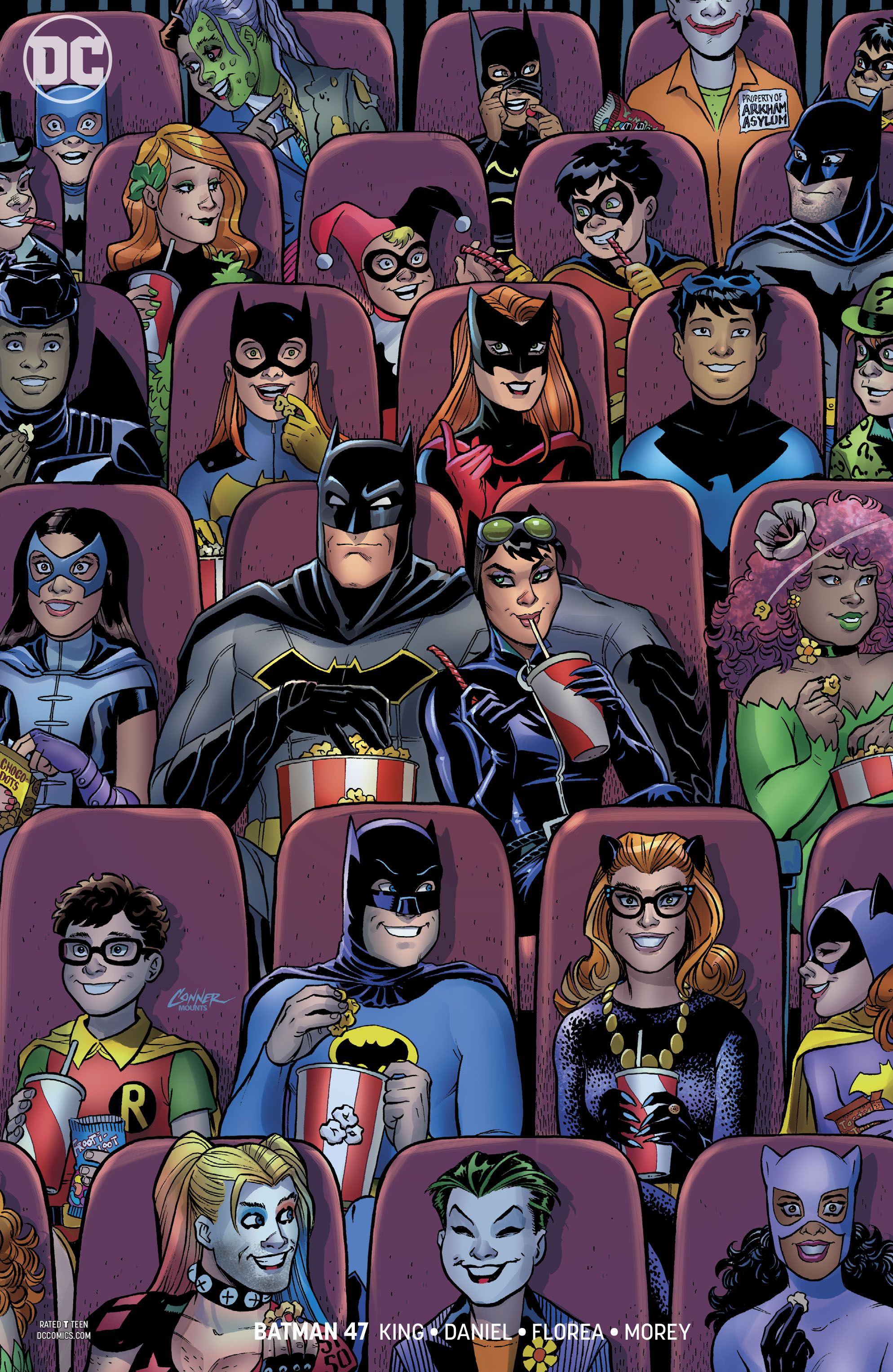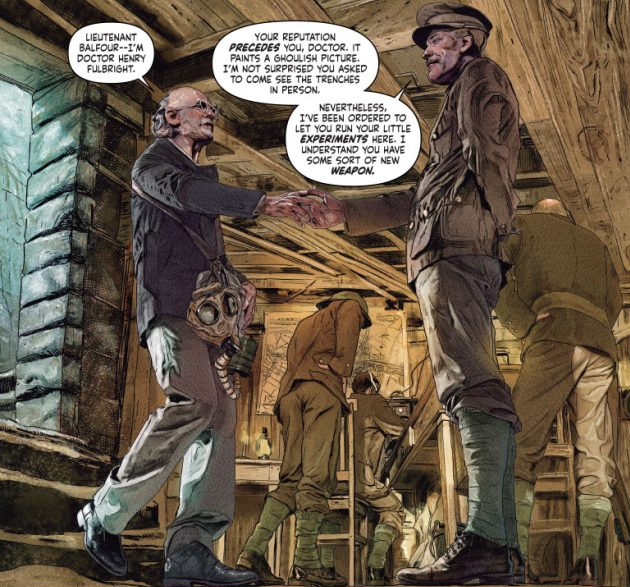Top Comics of May 2018
May was huge for superhero comics, with both Marvel and DC locking their futures into place for the next 12 to 18 months. This resulted in some of the best #1 issues of late, as well as in one truly-epic finale for a long run on a flagship character (more below).
May was, in short, fantastic for fans of action and superheroes, and for those of us who like to feel like a kid again by leaving the office to eat lunch on Wednesdays in a sad Subway on Blue Ravine Road in Folsom, CA, where the sandwich artists are generous with the veggies and that one Ed Sheeran song (I’m in love with your body, Oh—I—oh—I—oh—I—oh—I, etc.) is always always playing. Ahem. I’ve gotten oddly specific and way off track, a good sign it’s time to start our list.
Let’s do it!
Shout Outs
Abbott #5: Abbott concludes with this issue, and man was it a killer series, laden with social commentary and supernatural chills, plus some of the prettiest panels in any comic this year. I highly recommend this book and even thought it could have used a sixth issue to let some of the ideas in its finale breath, but this is a small complaint.
Action Comics Special #1: This one-off conclusion for Dan Jurgens’ Action Comics run was heavy on Lois and Lex, which is enough to get a thumbs up from me. Extra points for the backup from Mark Russell (more on him below).
Avengers #1 - #2: Mark Waid did an admirable job on Avengers while we all decompressed following Jonathan Hickman’s all-time great stint, but I’m ready for the team to be leading the Marvel Universe again, which is where Jason Aaron has it in these early issues.
And all of a sudden, Jorge Jimenez and Alejandro Sanchez are DC's best art team...
DC Nation #0: Jorge Jimenez and Alejandro Sanchez are the best artists working in superheroes today, as shown by the Justice League preview here.
Doctor Strange #390: Cates-Zdarsky Spider-Man two-page vignette alone lands it here. Hi-larious.
Flash #47: Flash War is brewing. A lot of Rebirth books slowed down after the first two years, but Josh Williamson’s Flash is peaking. Also, more Howard Porter art, please!
Man of Steel #1: Needs more Lois, but I’m giving Bendis time there. Aside from that, his take on Superman started well, with deep understanding of what makes the character admirable, inspirational, beloved, etc. More here!
Marvel 2-in-1 #6: This continues to be Marvel’s best and most consistent comic, doling out laughs, action, and heartfelt moments in equal part. Chip Zdarsky is a criminally underrated superhero writer.
Spider-Man #240: Bendis farewell to his 18-year Spider-Man run almost made me cry. I read #1 when I was 15 (a scientifically ideal time to read about Spider-Man) and grew to adulthood with this writer and this book, which is all a poignant reminder of life’s inherent and unstoppable capacity for change.
Top Comics of May 2018
5. Super Sons #16 by Peter Tomasi, Art Thibert, & Carlo Barberi: I’d be taking a far more somber tone about this book had Peter Tomasi not announced that he would write a 12-issue series, dubbed Adventures of the Super Sons, about Jon Kent and Damian Wayne in August, but it did, so here we are. Super Sons is my favorite book that hasn’t yet made our monthly Top 5, and I think the reason is it’s just so reliable and consistent.
The dynamic between Jon and Damian is the heart of this book, which has also boasted wonderful art during its run, most of which was done by my aforementioned favorite superhero team, Jorge Jimenez and Alejandro Sanchez. Tomasi’s plotting keeps to a modest yet exciting scope, and the guest spots from the boys’ parents are always delightful.
4. Barrier #1 - #5 by Brian K. Vaughan, Marcos Martin, & Munsta Vincente: I first read (and loved) Barrier a couple years back when it ran on Brian K. Vaughan’s digital comics site, Panel Syndicate, but I used May’s print run to collect the issues and re-visit the story. As I did, I detailed some of my thoughts in reviews, and I noticed that many folks I knew were reading the book for the first time.
Simply put, good on you! Barrier is a beautifully-illustrated story about the constructs that have come to divide humanity, including language, nation states, natural resources, or misunderstandings. With this fertile ground, the surprising story goes on to tell a tense and poignant tale about two unlikely allies brought together and forced to bond.
I can’t say much past that without spoiling things, but I want to note the last panel of Barrier #5 is one that has stuck with me for years and was reopened in my mind this month like a trauma I haven’t fully processed. Barrier is truly my favorite type of story, one that asks hard questions without forcing pedantic answers.
3. Amazing Spider-Man #800 by Dan Slott, Stuart Immonen, & Team: Dan Slott and his many artistic collaborators really tell a story here worthy of milestone status, playing on an old Spider-Man trope that never fails to feel compelling—imperiling the many meaningful friends Pete has made over the years. The core concept for Peter Parker is he’s a lovable loser gifted with superpowers and doing his best to satisfy the responsibilities that come along with them. This makes the stakes for Pete always intriguing. After all, it’s his value to the world in question, and who hasn’t contemplated that?
But when the danger comes to his supporting cast, Spider-Man really turns compelling. Slott knows this, clearly. He also has a decade of stories to draw friendships from. That combination makes for one of the most taut over-sized comics in recent memory, one that eschews the multiple vignette thing similar issues resort to in favor of a grand finale for Slott’s landmark run on Marvel’s flagship comic, Amazing Spider-Man.
2. Nightwing #44 by Benjamin Percy, Chris Mooneyham, & Team: I have a documented love of Benjamin Percy’s run on Green Arrow, which concluded earlier this year, so I was looking forward to this issue as soon as it was announced Percy would on Nightwing. I was not, however, prepared for how much I’d like this book. Simply put, Percy wrote his fingers off (gross, I know), crafting a comic rich with clever turns of phrase, great interactions between characters (especially Babs and Dick), and a sprinkling of the odd factoids that make Percy’s narrations in comics (and novels/short stories) so compelling. This is also a timely story, with much to say about mankind’s accelerating reliance on tech.
My other major point of praise is Chris Mooneyham and team’s artwork. Be it a subway or junkyard, the art depicts Bludhaven as a gritty, hard-boiled place, more late 70s/early 80s New York than the absurdist alternate Atlantic City it had become under other recent writers. It’s a choice that contributes much without detracting from character or narrative, and it has me hoping this team remains on the book for a good while.
1. Exit Stage Left: The Snagglepuss Chronicles #5 by Mark Russell, Mike Feehan, & Sean Parsons: As unlikely as it sounds, I have been made to laugh, cry, and consider about my place in society by a comic book about the Hanna-Barbera cartoon Snagglepuss. And this just a few months after the book’s writer, Mark Russell, inspired me to say this aloud to a friend, “The most cutting satire about 2018 is a comic book about The Flintstones.” Yes, it’s all very strange.
The unlikelihood of such poignant work being done with licensed characters is an easy talking point when describing Exit Stage Left. What’s much harder is articulating what Russell and team have done with these comics to make the source material so relevant. In The Flintstones, each issue was a different vignette with a loose through-line to future installments, a fragmented narrative about how the military industrial complex and tribalism has shaped mankind. Exit Stage Left is just as smart, but here Russell has crafted a more linear and complete story, one that better enables him to kick the bottom of your heart out.
This fifth issue is the emotional climax of the series, within which the ill fortune Russell had planned for our hero finally catches up to him. He does the right thing and is punished by a misguided and unjust political society. This comic is not as direct a commentary as The Flintstones was, but in many ways it is the superior book—an emotional ride that makes readers contemplate many facets of humanity, from authenticity to artistic value to the mental gymnastics we perform to justify our points of views. There’s one issue left, but Exit Stage Left has already established itself as one of the best of 2018.
Zack Quaintance is a journalist who also writes fiction and makes comics. Find him on Twitter at @zackquaintance. He lives in Sacramento, California.





















































